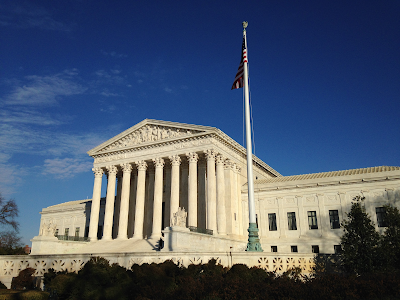 |
| U.S. Supreme Court Ruling |
Supreme Court Ruling Reshapes Affirmative Action in College Admissions: Implications and Reactions
Introduction:
In a landmark decision, the U.S. Supreme Court has ruled that the consideration of race in college admissions by two prominent universities, Harvard University and the University of North Carolina, violates the equal protection clause of the 14th Amendment.
This ruling has far-reaching implications for the role of affirmative action in higher education across the United States. In a 6-3 decision, Chief Justice John Roberts wrote that the admissions programs at both universities lack measurable objectives, involve racial stereotyping, and fail to meet the guarantees of the Equal Protection Clause.
The dissenting justices argue that the decision further entrenches racial inequality in education, undermining the constitutional principle of equal protection.
Harvard and UNC Admissions Violate Equal Protection Clause:
Chief Justice Roberts, writing for the majority, stated that Harvard's and UNC's admissions programs cannot be reconciled with the guarantees of the Equal Protection Clause.
The Court found that the universities' consideration of race lacks sufficiently focused and measurable objectives, resulting in negative racial stereotyping. The decision holds significance for higher education as it affects both private and public institutions.
Dissenting Opinions Argue for Race-Conscious Means:
Justice Sonia Sotomayor, one of the dissenting justices, wrote that the Supreme Court has long concluded that enforcing the guarantee of racial equality may require race-conscious means.
Sotomayor argues that the decision cements a superficial rule of colorblindness in a society where race continues to matter and perpetuates racial inequality in education, a pillar of democratic government and a pluralistic society.
Sotomayor points out the sordid legacies of racial exclusion at both Harvard and UNC, highlighting their historical struggles with racial subjugation and ongoing racial disparities.
Legal Background and Lawsuits:
The decision stems from two lawsuits filed in 2014 against Harvard College and the University of North Carolina. The lawsuits aimed to overturn the precedent set by Grutter v. Bollinger, which permits the use of race-conscious admissions by universities.
Students for Fair Admissions, the group behind the lawsuits, argued that Harvard violated Title VI of the Civil Rights Act by disproportionately admitting Black, Latino, and Indigenous applicants compared to equally qualified Asian American applicants.
The UNC case challenged the consideration of race in admissions as a violation of the 14th Amendment's equal protection clause.
Affirmative Action and Its History:
Affirmative action originated from the civil rights movement in the 1960s when President Lyndon B. Johnson issued an executive order to eliminate workplace discrimination based on race, religion, and later gender.
Affirmative action aims to address historical racial inequalities by promoting diversity and equal opportunities. However, nine states, including California and Michigan, have banned race-based affirmative action in public institutions. The decision's impact may further limit opportunities for students of color in those states.
Reactions to the Decision:
Following the Supreme Court's decision, various lawmakers, former leaders, and public figures expressed their opinions. Former President Barack Obama and former First Lady Michelle Obama released statements emphasizing the need to provide opportunities for minority students.
Senate Majority Leader Chuck Schumer criticized the decision, describing it as misguided and a roadblock to racial justice. On the other hand, former South Carolina governor and 2024 GOP presidential candidate Nikki Haley praised the ruling, emphasizing the importance of equal opportunity for all students.
Oral Arguments and Conservative Wing's View:
During oral arguments, conservative justices questioned the legality and duration of race-based admissions policies. They referenced a 2003 case that predicted the obsolescence of affirmative action within 25 years.
Justice Clarence Thomas, the sole Black justice on the Supreme Court, pressed lawyers defending the universities on the educational benefits of diversity, challenging the notion that college is solely for personal enjoyment.
Conclusion:
The U.S. Supreme Court's ruling on the Harvard and UNC admissions cases has significant implications for the future of affirmative action in college admissions.
The decision, with a majority in favor of the plaintiffs, deems the consideration of race in admissions unconstitutional. While the dissenting justices argue that race-conscious means are necessary to address historical racial inequalities, the ruling reinforces a colorblind approach to admissions.
As the debate surrounding affirmative action continues, it remains to be seen how this decision will shape the landscape of higher education and access to opportunities for students from underrepresented backgrounds.
Tags:
Comments
Post a Comment
Thank you for visiting www.khabarnaihai.com
If you have any suggestion or question then please do let us know. leave a comments or do eMail at [email protected]
Best Regards;
MsunTV